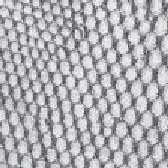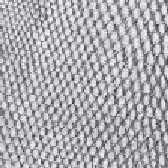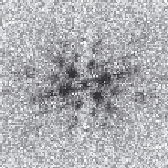Image Processing Reference
In-Depth Information
(a) Texture image
(b) Scaled texture image
(c) Transform of original
(d) Transform of scaled
texture
texture
Figure 2.20
Illustrating frequency scaling
and
I
2
, the response to signal
I
1
is
O
(
I
1
), that to signal
I
2
is
O
(
I
2
), and the response to
I
1
and
I
2
, when applied together, is
O
(
I
1
+
I
2
), the superposition principle states:
O
(
I
1
+
I
2
) =
O
(
I
1
) +
O
(
I
2
) (2.33)
Any system which satisfies the principle of superposition is termed linear. The Fourier
transform is a linear operation since, for two signals
p
1
and
p
2
:
F
[
p
1
+
p
2
] =
F
[
p
1
] +
F
[
p
2
] (2.34)
In application this suggests that we can separate images by looking at their frequency
domain components. Given the image of a fingerprint in blood on cloth, it is very difficult
to separate the fingerprint from the cloth by analysing the combined image. However, by
translation to the frequency domain, the Fourier transform of the combined image shows
strong components due to the texture (this is the spatial frequency of the cloth's pattern)
and weaker, more scattered, components due to the fingerprint. If we suppress the frequency
components due to the cloth's texture, and invoke the inverse Fourier transform, then the
cloth will be removed from the original image. The fingerprint can now be seen in the
resulting image.
2.7
Transforms other than Fourier
2.7.1
Discrete cosine transform
The
Discrete Cosine Transform
(DCT) (Ahmed, 1974) is a real transform that has great
advantages in
energy compaction
. Its definition for spectral components
DP
u
,
v
is:
N
-1
N
-1
1
P
if = 0 and = 0
u
v
xy
,
2
N
x
=0
y
=0
(2.35)
DP
=
v
u
,
N
-1
N
-1
(2 + 1)
2
y
v
(2 + 1)
2
x
u
2
P
cos
cos
otherwise
xy
,
N
N
2
N
x
=0
y
=0
The inverse DCT is defined by
NN
-1
-1
v
(2 + 1)
2
x
u
(2 + 1)
2
y
1
Σ
v
(2.36)
P
=
DP
cos
cos
v
xy
,
u
,
N
N
N
2
u
=0
=0
























